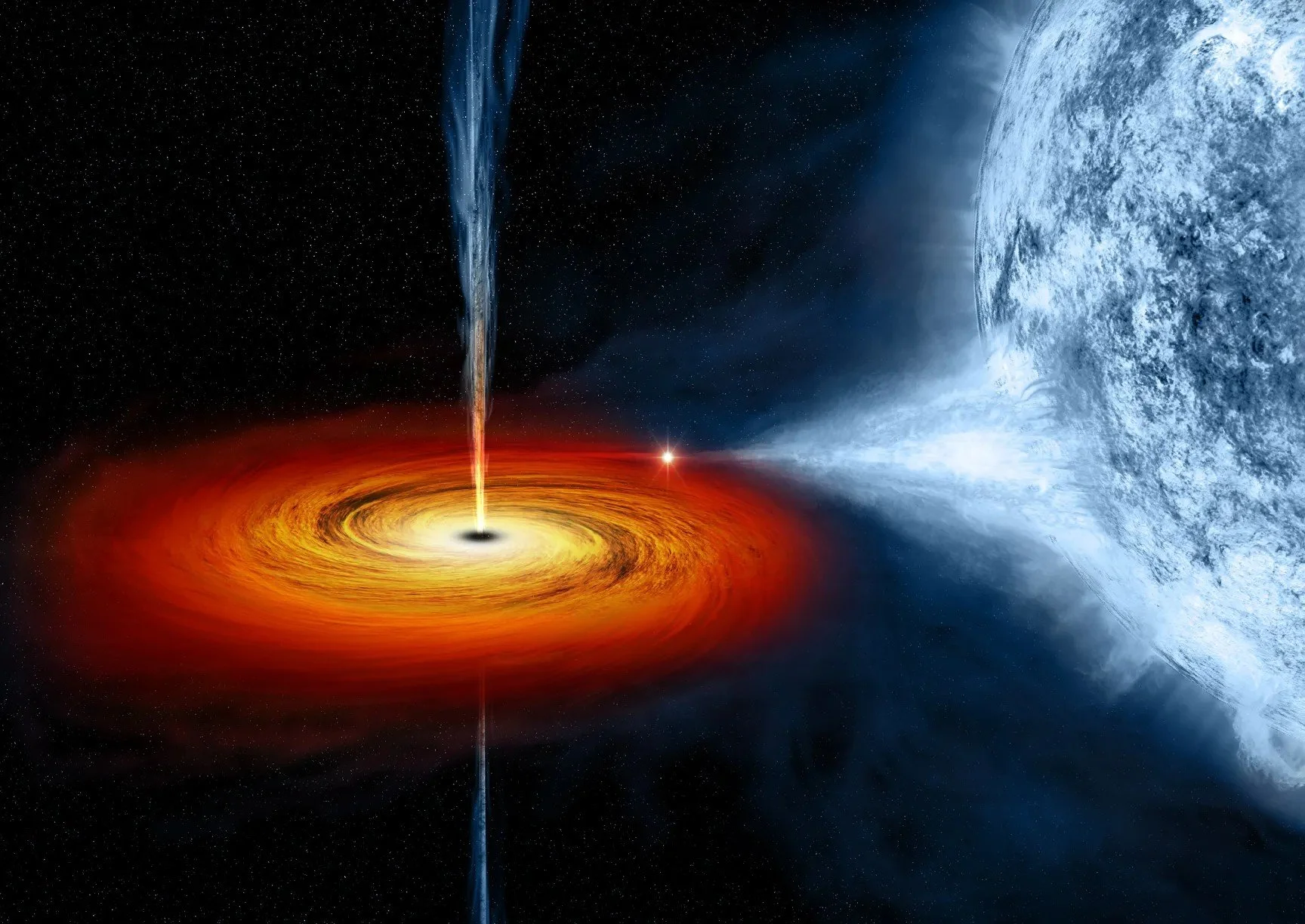“Space Jaws” Unleashed: NASA Telescopes Capture a Rogue Black Hole Devouring a Star
Credit: NASA.gov
In a discovery that feels torn from the pages of science fiction, astronomers have captured a rare and violent cosmic event: a supermassive black hole stealthily drifting through a galaxy, ripping a star apart and swallowing it whole. Like a lurking predator in deep space, this so-called “Space Jaws” is not tethered to the galactic core, where such monsters usually reside—but is instead wandering through the galactic outskirts, consuming matter in bursts of brilliant radiation.
The event, named AT2024tvd, marks the first-ever optical detection of an “offset” tidal disruption event (TDE)—a stellar death knell occurring far from a galaxy’s nucleus. Detected by NASA’s Hubble Space Telescope, with follow-up observations from the Chandra X-ray Observatory and the Very Large Array, this singular flare signals the presence of a rogue supermassive black hole roughly 1 million times the mass of our Sun—adrift and actively feeding in the wild.
A Star’s Violent End
The drama began when a star wandered too close to this nomadic black hole, only to be torn asunder by gravitational tidal forces so extreme they stretched it into a thin stream of gas—a process astrophysicists call “spaghettification.” The black hole then devoured the remnants, unleashing an intense flare of radiation—as luminous as a supernova and visible across ultraviolet, optical, and X-ray wavelengths.
TDEs like AT2024tvd are more than just spectacular fireworks; they are cosmic beacons, exposing otherwise hidden black holes. “Tidal disruption events hold great promise for illuminating the presence of massive black holes that we would otherwise not be able to detect,” said Ryan Chornock of UC Berkeley, a member of the Zwicky Transient Facility (ZTF) team, which first spotted the flare.
Unlike previous TDEs—of which about a hundred have been recorded—all linked to central black holes, this one stood out: it was clearly offset from the galaxy’s center. The ZTF, scanning the sky every two nights with its 1.2-meter telescope at Palomar Observatory, noticed the flash. But it took the precision of Hubble and the penetrating X-ray vision of Chandra to confirm what astronomers were seeing—a supermassive black hole far from home.
The Black Hole That Shouldn’t Be There
Galactic cores are typically home to black holes of monstrous scale, and this host galaxy is no exception. Its center already harbors a 100-million-solar-mass black hole, fiercely active and spewing energy as gas falls into its maw—a classic active galactic nucleus (AGN). Yet this newly discovered 1-million-solar-mass black hole is only 2,600 light-years away from its larger sibling—an incredibly close cosmic distance, about a tenth of the gap between Earth and our own galaxy’s central black hole.
But there’s a twist: the two aren’t gravitationally bound. They’re not in orbit, not spiraling toward collision—yet. Theories suggest the rogue may eventually merge with the central black hole billions of years from now, but for the moment, it remains an unbound drifter, prowling the galaxy’s outskirts.
How Did It Get There?
Astronomers are still piecing together the origin story of this wandering giant. One possibility is a three-body interaction—a chaotic gravitational dance where the lightest black hole is flung out of the galactic core. Another theory proposes that the rogue is the leftover remnant of a long-ago galactic merger, in which a smaller galaxy, along with its central black hole, was absorbed by the larger host. If that’s the case, this hidden black hole has been lurking unseen for over a billion years, occasionally flaring into view when a star dares to come too close.
Erica Hammerstein, a UC Berkeley postdoctoral researcher who helped analyze the Hubble imagery, saw no signs of a past galaxy merger, leaving the black hole’s origins even more mysterious. “There is already good evidence that galaxy mergers enhance TDE rates,” she noted, “but the presence of a second black hole in AT2024tvd’s host galaxy means that at some point in this galaxy’s past, a merger must have happened.”
Lighting the Way for Future Discoveries
Lead author Yuhan Yao, a researcher at UC Berkeley, believes this groundbreaking find will change how astronomers search for rogue black holes in the future. “AT2024tvd is the first offset TDE captured by optical sky surveys, and it opens up the entire possibility of uncovering this elusive population of wandering black holes,” she said. “Right now, theorists haven’t given much attention to offset TDEs. I think this discovery will motivate scientists to look for more examples.”
Thanks to upcoming surveys and telescopes like the Vera C. Rubin Observatory’s Legacy Survey of Space and Time (LSST), astronomers expect to discover many more wandering black holes, using these telltale tidal disruption flares as cosmic breadcrumbs.
For now, AT2024tvd remains a haunting reminder of the invisible predators stalking the universe—dark leviathans that only reveal themselves in a fleeting, star-devouring flash. And somewhere, deep within that galaxy 600 million light-years away, a black hole is silent again, waiting for its next victim.
This article contains AI generated content using information from these sources:
PHYS.org - https://phys.org/news/2025-05-hubble-roaming-massive-black-hole.amp
